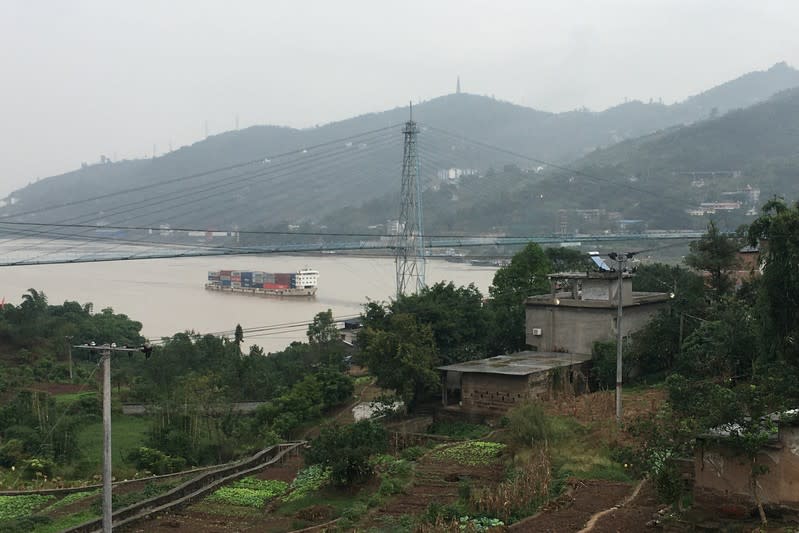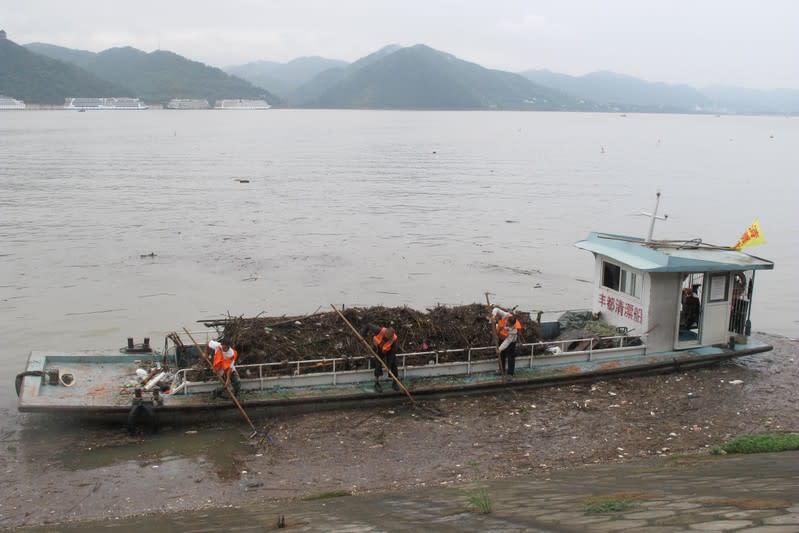Factbox: A history of China's Three Gorges project
SHANGHAI (Reuters) - China's giant Three Gorges project, the world's biggest hydropower plant in the middle reaches of the Yangtze river, continues to confound policymakers tackling its massive social and environmental impact.
Here is a history of the project.
1918: President Sun Yat-sen publishes The Fundamentals of National Reconstruction and proposes the construction of a dam at the Three Gorges.
1944: U.S. hydropower expert John Savage, invited by President Chiang Kai-shek to assess the Three Gorges, proposes a facility with a 200-metre-deep reservoir and a generating capacity of 10.65 gigawatts.
June 1946: The first of the dams proposed by Savage begins construction, but it is halted on Aug. 3 the following year because of the Chinese civil war.
February 1953: On a trip to the Yangtze, Mao Zedong complains that flood-control projects on the river's tributaries have failed and China should dam the Three Gorges.
June-September 1954: A third of Wuhan is submerged during devastating flooding that affects 18.8 million people. Li Peng, the politician who did the most to ensure the Three Gorges Project was eventually built, describes the flood as "a living lesson."
January 1958: A meeting of the central committee in Nanning hears a new report on building the Three Gorges Dam, saying that work should first begin on the tributaries because a project on the main river would be too big and expensive.
1979: Ministry of Water Resources submits a proposal to build the Three Gorges Dam to the cabinet, the State Council.
1982: Leader Deng Xiaoping pledges to proceed with the dam.
June 1986: China's Hydropower Ministry sets up a team of 412 experts to compile new feasibility studies.
1987: A delegation from China's advisory second chamber, the China People's Political Consultative Conference, visits the Three Gorges region and warns the project is not feasible.
August 1990: China's cabinet invites 163 experts to join a special committee to further assess the project's feasibility.
April 1992: China's parliament, the National People's Congress, formally approves the project, but a third of delegates vote against the plan or abstain.
December 1994: China holds a ground-breaking ceremony to launch construction, with Premier Li Peng making the keynote speech.
November 1997: The Yangtze is blocked and diverted to make way for workers to start building the dam.
May 2006: The construction of the 185-metre dam is completed.
January 2007: China's National Audit Office reveals widespread misuse of funds at the project between 2004-2005.
September 2007: A meeting is held in Wuhan to discuss the challenges facing the Three Gorges project, acknowledging "hidden dangers" such as the fragile ecosystem of the reservoir region, the proliferation of natural disasters, and the risk of mud and landslides.
July 2011: China's State Council publishes a "Three Gorges Follow-Up Work Plan" promising to spend 1.24 trillion yuan on fixing the social and environmental problems caused by the giant dam.
May 2012: All 26 of the turbines are put into operation, marking the formal completion of the Three Gorges hydropower project and bringing total generation capacity to 22.5 gigawatts.
April 2018: Xi Jinping visits the dam. He reiterates his pledge to put an end to large-scale development on the Yangtze.
July 2019: Li Peng, the Communist Party politician responsible for the Three Gorges Dam, dies at age 90.
(Editing by Gerry Doyle)


